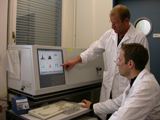|
|
PET-bottlesPET-bottles
AntimonyAntimony speeds up chemical processes in the manufacture of PET (catalyst). However, antimony does not get into the water unless the bottles are stored for a very long time or heated to very high temperatures. The storage times and temperatures in question far exceed those that are involved in the correct application of the SODIS method. There is therefore no danger to the health of SODIS users. Adipates and phthalatesAdipates and phthalates are used as softeners in the production of certain types of plastics and packaging materials (e.g. PVC). Adding these substances to the plastic makes it more flexible and easier to work. Although these softeners are not particularly toxic, they do represent a threat to health if they are consumed in large quantities. However, softeners are not needed in the production of PET. If softeners are found in the water from PET bottles, they must have been in the water before the bottles were filled. AldehydesAldehydes are formed when the plastic is heated in the manufacturing process for PET bottles. A research group in Eawag, the Swiss Federal Institute of Aquatic Science and Technology,, therefore researched the questions of whether formaldehydes and acetaldehydes are transferred from the PET bottles to the water when the SODIS method is applied, and if so, in what quantities. It was found that exposure to the sun has no effect on the concentration of acetaldehydes, though the concentration of formaldehydes does increase with the length of exposure. However the concentrations of aliphatic aldehydes remained far below the state regulatory limit for drinking water in all samples. Therefore, the SODIS method does not pose a health risk. |
SCIENTIFIC PUBLICATIONSResearch results in the areas of Microbiology, Health, Training strategies, PET bottles | more >> 
|
|
|